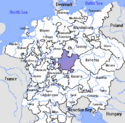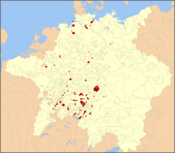Nuremberg
| Nürnberg Nuremberg |
|
 |
|
| Coat of arms | Location |
 |
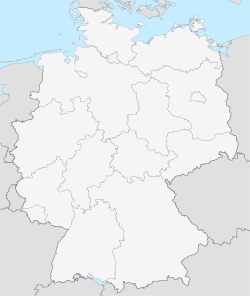 |
| Administration | |
| Country | Germany |
|---|---|
| State | Bavaria |
| Admin. region | Middle Franconia |
| District | Urban district |
| Mayor | Ulrich Maly (SPD) |
| Basic statistics | |
| Area | 186.38 km² (72 sq mi) |
| Elevation | 302 m (991 ft) |
| Population | 500,132 (27/10/2009) |
| - Density | 2,683 /km² (6,950 /sq mi) |
| Other information | |
| Time zone | CET/CEST (UTC+1/+2) |
| Licence plate | N |
| Postal codes | 90000-90491 |
| Area code | 0911 |
| Website | nuernberg.de |
Nuremberg (German: Nürnberg ['nʏɐ̯nbεɐ̯k]) is a city in the German state of Bavaria, in the administrative region of Middle Franconia. It is situated on the Pegnitz river and the Rhine-Main-Danube Canal and is Franconia's largest city. It is located about 170 kilometres north of Munich, at 49.27° N 11.5° E. Population (as of 01/2006) is 500,132.
Contents |
History
Middle Ages
From 1050 to 1571, the city expanded and rose dramatically in importance due to its location on key trade routes. It is often referred to as having been the 'unofficial capital' of the Holy Roman Emperor, particularly because Reichstage (Imperial Diets) and courts met at Nuremberg Castle. The Diets of Nuremberg were an important part of the administrative structure of the empire. In 1219 Nuremberg became an Imperial Free City under Emperor Frederick II.[1] Nuremberg soon became, with Augsburg, one of the two great trade centers on the route from Italy to Northern Europe.
In 1298, the Jews of the town were accused of having desecrated the host and 698 were slain in one of the many Rintfleisch Massacres. Behind the massacre in 1298 was also the desire to combine the northern and southern parts of the city, which were divided by the Pegnitz River. Jews had been settled in that flood-prone area, but as the city leaders realized, this center of town was crucial to its future development. Hence, the Jewish population had to be removed. This area is now the place of the City Market, Frauenkirche and Rathaus (City Hall).
Early modern age

(from the Nuremberg Chronicle).
The cultural flowering of Nuremberg, in the 15th and 16th centuries, made it the center of the German Renaissance.
In 1525, Nuremberg accepted the Protestant Reformation, and in 1532, the religious Peace of Nuremberg, by which the Lutherans gained important concessions, was signed there. In 1632 during the Thirty Years' War, the city, occupied by the forces of Gustavus Adolphus of Sweden, was besieged by the army of Imperial general Albrecht von Wallenstein. The city declined after the war and recovered its importance only in the nineteenth century, when it grew as an industrial center.
At the beginning of the nineteenth century Nuremberg was practically bankrupt. In 1806 with the Holy Roman Empire formally being dissolved, Nuremberg passed to Bavaria. The Bavarian state took over the city's debts and guaranteed their amortization.
The first German railway, from Nuremberg to nearby Fürth, was opened in 1835.
Nazi era

Nuremberg held great significance during the Nazi Germany era. Because of the city's relevance to the Holy Roman Empire and its position in the centre of Germany, the Nazi Party chose the city to be the site of huge Nazi Party conventions–the Nuremberg rallies. The rallies were held annually from 1927 to 1938 in Nuremberg. After Hitler's rise to power in 1933 the Nuremberg rallies became huge state propaganda events, a center of anti-Semitism and other Nazi ideals. At the 1935 rally, Hitler specifically ordered the Reichstag to convene at Nuremberg to pass the anti-Semitic Nuremberg Laws which revoked German citizenship for all Jews. A number of premises were constructed solely for these assemblies, some of which were not finished. Today many examples of Nazi architecture can still be seen in the city. The city was also the home of the Nazi propagandist Julius Streicher, the publisher of Der Stürmer.
During World War II, Nuremberg was the headquarters of Wehrkreis (military district) XIII, and an important site for military production, including airplanes, submarines, and tank engines. A subcamp of Flossenbürg concentration camp was located here. Extensive use was made of slave labour.[2] The city was severely damaged in Allied strategic bombing from 1943-1945. On January 2, 1945, the medieval city centre was systematically bombed by the Royal Air Force and the U.S. Army Air Forces and about ninety percent of it was destroyed in only one hour, with 1,800 residents killed and roughly 100,000 displaced. In February 1945, additional attacks followed. In total, about 6,000 Nuremberg residents are estimated to have been killed in air raids. Despite this, the city was rebuilt after the war and was to some extent, restored to its pre-war appearance including the reconstruction of some of its medieval buildings.

Nuremberg Trials
Between 1945 and 1946, German officials involved in the Holocaust and other war crimes were taken in front of an international tribunal in the Nuremberg Trials. The Soviet Union had wanted the trials to take place in Berlin, but Nuremberg was chosen as the site for the trials for specific reasons:
- It was located in the American occupation zone
- The Palace of Justice was spacious and largely undamaged (one of the few that had remained largely intact through extensive Allied bombing of Germany). The already large courtroom was reasonably easily expanded by the removal of the wall at the end opposite from the bench, thereby incorporating the adjoining room. A large prison was also part of the complex.
- The city had been the location of the Nazi Party's Nuremberg rallies; there was symbolic value in making it the place of the Nazi demise.
- As a compromise, it was agreed that Berlin would become the permanent seat of the International Military Tribunal and that the first trial (several were planned) would take place in Nuremberg. Because of the Cold War, there were no subsequent trials.
The same courtroom in Nuremberg was the venue of the Nuremberg Military Tribunals, organised by the United States as occupying power in the area.
Economy

Nuremberg for many people is still associated with its traditional gingerbread (Lebkuchen) products, sausages, and handmade toys. The first pocket watches — Nuremberg eggs — were made here in the sixteenth century. In the nineteenth century Nuremberg became the "industrial heart" of Bavaria with companies such as Siemens and MAN establishing a strong base in the city. Nuremberg is still an important industrial center with a strong standing in the markets of Central and Eastern Europe. Items manufactured in the area include electrical equipment, mechanical and optical products, motor vehicles, and printed materials. The city is also strong in the fields of automation, energy, and medical technology. Siemens is still the largest industrial employer in the Nuremberg region but a good third of German market research agencies is also located in the city. The Nuremberg International Toy Fair is the largest of its kind in the world. The city also hosts several specialist hi-tech fairs every year, attracting experts from every corner of the globe.
Culture

Nuremberg was an early center of humanism, science, printing, and mechanical invention.
The city contributed much to the science of astronomy. In 1471 Johannes Mueller of Königsberg (Bavaria), later called Regiomontanus, built an astronomical observatory in Nuremberg and published many important astronomical charts. In 1515, Albrecht Dürer, a native of Nuremberg, mapped the stars of the northern and southern hemispheres, producing the first printed star charts, which had been ordered by Johannes Stabius. Around 1515 Dürer also published the "Stabiussche Weltkarte", the first perspective drawing of the terrestrial globe. Perhaps most famously, the main part of Nicolaus Copernicus' work was published in Nuremberg in 1543.
Printers and publishers have a long history in Nuremberg. Many of these publishers worked with well-known artists of the day to produce books that could also be considered works of art. In 1470 Anton Koberger opened Europe's first print shop in Nuremberg. In 1493, he published the Nuremberg Chronicles, also know as the World Chronicles (Schedelsche Weltchronik), an illustrated history of the world from the creation to the present day. It was written in the local Franconian dialect by Hartmann Schedel and had illustrations by Michael Wohlgemuth, Wilhelm Pleydenwurff, and Albrecht Dürer. Others furthered geographical knowledge and travel by map making. Notable among these was navigator and geographer Martin Behaim, who made the first world globe.
Sculptors such as Veit Stoss and Peter Vischer are also associated with Nuremberg.
Composed of prosperous artisans, the guilds of the Meistersingers flourished here. Richard Wagner made their most famous member, Hans Sachs, the hero of his opera Die Meistersinger von Nürnberg. Baroque composer Johann Pachelbel was born here and was organist of St. Sebaldus Church.
Nuremberg is also famous for its Christmas market, which draws well over a million shoppers each year. The market is famous for its handmade ornaments and delicacies.
Main sights


The southern part of the old town, known as Lorenzer Seite, is separated from the north by the river Pegnitz and encircled to the south by the city walls.
- Nuremberg Castle: the three castles that tower over the city including central burgraves' castle, with Free Reich's buildings to the east, the Imperial castle to the west.
- Heilig-Geist-Spital. In the centre of the city, on the bank of the river Pegnitz, stands the Hospital of the Holy Spirit. Founded in 1332, this is one of the largest hospitals of the Middle Ages. Lepers were kept here at some distance from the other patients. It now houses elderly persons and a restaurant.
- Hauptmarkt, which provides a picturesque setting and famous market for gingerbread. Nuremberg's star attraction is the Gothic Schöner Brunnen (Beautiful Fountain) which was erected around 1385 but subsequently replaced with a replica (the original fountain is kept in the Germanisches Nationalmuseum). The unchanged Renaissance bridge Fleischbrücke crosses the Pegnitz nearby.
- The following churches are located inside the city walls: St. Sebaldus Church, St. Lorenz, Frauenkirche (Our Lady's Church), Saint Klara, Saint Martha, Saint Jakob, Saint Egidien, and Saint Elisabeth.
- Gothic St Lorenz-Kirche (St. Lorenz church, St. Lorenz), one of the most important buildings in Nuremberg. The main body was built around 1270-1350.
- The church of the former Katharinenkloster is preserved as a ruin, the Cartause is integrated into the building of the Germanisches Nationalmuseum and the choir of the former Franzikanerkirche is part of a modern building.
- The Walburga Chapel and the Romanesque Doppelkapelle (Chapel with two floors) are part of Nuremberg Castle.
- The Johannisfriedhof is a medieval cemetery, containing many old graves (Albrecht Dürer, Willibald Pirckheimer, and others). The Rochusfriedhof or the Wöhrder Kirchhof are near the Old Town.
- The Tiergarten Nürnberg is a zoo stretching over more than 60 ha in the Nürnberger Reichswald. It is the home of Flocke, an orphan polar bear cub who in 2008 became a major attraction and a figure of a large publicity campaign for Nuremberg's metropolitan region.
- There is also a medieval market just inside the city walls, selling handcrafted goods.
- The German National Railways Museum (German) (an Anchor Point of ERIH, The European Route of Industrial Heritage) is located in Nuremberg.
- The Nuremberg Ring (now welded within an iron fence) is said to bring good luck to those that touch it.
Transport
The city's location next to numerous highways, railways, and a waterway has contributed to its rising importance for trade with Eastern Europe.
Motorways
Nuremberg is conveniently located at the junction of several important Autobahn routes. The A3 (Netherlands-Frankfurt-Würzburg-Vienna) passes in a south-easterly direction along the north-east of the city. The A9 (Berlin-Munich) passes in a north-south direction on the east of the city. The A6 (France-Saarbrücken-Prague) passes in an east-west direction to the south of the city. Finally, the A73 begins in the south-east of Nuremberg and travels north-west through the city before continuing towards Fürth and Bamberg.
Railways
Nürnberg Hauptbahnhof is a stop for IC and ICE trains on the German long-distance railway network. The Nuremberg–Ingolstadt–Munich High-Speed line with 300 km/h operation opened May 28 2006, and was fully integrated into the rail schedule on December 10 2006. Travel times to Munich have been reduced to as little as one hour.
Airport
Nuremberg Airport has flights to major German cities and many European destinations, as well as connecting flights worldwide, for example via Frankfurt or Vienna. Air Berlin uses Nuremberg Airport as the airline's hub, especially in the winter season.
City and regional transport

The first segment of the Nuremberg U-Bahn metro system was opened in 1972. The system, along with trams and buses, are operated by the VAG Nürnberg (Verkehrsaktiengesellschaft Nürnberg or Nuremberg Transport Corporation), itself a member of the VGN (Verkehrsverbund Großraum Nürnberg or Greater Nuremberg Transport Network). There is also a Nuremberg S-Bahn suburban metro railway and a regional train network, both centred on Nuremberg Central Station.
Canals
Nuremberg is an important port on the Main-Danube Canal.
Sport
Football
1. FC Nuremberg, known locally as Der Club, was founded in 1900 and is steeped in tradition. The team plays in the Second Bundesliga. The official colours of the association are red and white, but the traditional colours are red and black. The current president is Michael A. Roth.
They play in the EasyCredit Stadium, which was rebuilt for the World Championship in 2006 and accommodates 46,000.
- German Champion: 1920, 1921, 1924, 1925, 1927, 1936, 1948, 1961, 1968
- German Cup: 1935, 1939, 1962, 2007
Sister cities
Worldwide, Nuremberg is twinned with the following cities:
 Nice, France, since 1954
Nice, France, since 1954 Kraków, Poland, since 1979
Kraków, Poland, since 1979 Skopje, Macedonia, since 1982
Skopje, Macedonia, since 1982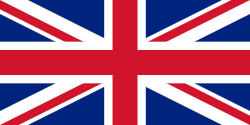 Glasgow, United Kingdom, since 1985
Glasgow, United Kingdom, since 1985 San Carlos, Nicaragua, since 1985
San Carlos, Nicaragua, since 1985 Gera, Germany, since 1988, renewed 1997
Gera, Germany, since 1988, renewed 1997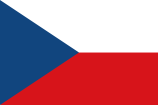 Prague, Czech Republic, since 1990
Prague, Czech Republic, since 1990 Kharkiv, Ukraine, since 1990
Kharkiv, Ukraine, since 1990 Hadera, Israel, since 1995
Hadera, Israel, since 1995 Shenzhen, China since 1997 (For this reason, Shenzhen set its European Contact Agency in Nuremberg)
Shenzhen, China since 1997 (For this reason, Shenzhen set its European Contact Agency in Nuremberg) Antalya, Turkey, since 1997
Antalya, Turkey, since 1997 Kavala, Greece, since 1998
Kavala, Greece, since 1998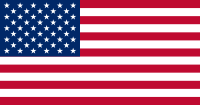 Atlanta, United States, since 1998
Atlanta, United States, since 1998 Venice, Italy, since 1999
Venice, Italy, since 1999
Partner cities
Nuremberg districts
Several old villages now belong to the city of Nuremberg, for example Großgründlach, Kraftshof, Thon, and Neunhof in the north-west; Ziegelstein in the north-east, Altenfurt and Fischbach in the south-east; and Katzwang, Kornburg in the south. Langwasser is a modern suburb.
Famous citizens
- Chaya Arbel (Israeli composer)
- Hans Behaim the Elder
- Ernst von Bibra
- Peter Bucher
- Albrecht Dürer
- Ludwig Andreas Feuerbach
- Hermann Kesten (writer)
- Kaspar Hauser
- Peter Henlein
- Anton Koberger
- Adam Kraft (sculptor and architect)
- Kunz Lochner
- Max Morlock
- Johann Pachelbel
- Conrad Paumann
- Hans Sachs
- Hartmann Schedel
- Alexander Schreiner organist, Mormon Tabernacle
- Veit Stoss
- Peter Vischer the Elder
- Johann Christoph Volckamer who authored here his Hesperides.
- Johann Philipp von Wurzelbauer
See also
- Nuremberg Trials
- Nuremberg Rally
- Christkindlesmarkt, Nuremberg
- Nürnberger Bratwürste
- Lebkuchen (gingerbread, specialty of Nuremberg)
- Tinsel (invented in Nuremberg)
- Triumph of the Will of Leni Riefenstahl
- Nuremberg Toy Museum ("Spielzeugmuseum")
- de:Geschichte der Stadt Nürnberg (History of the City of Nuremberg, in German)
- Germanisches Nationalmuseum
- Labour Exchange Headquarters ("Arbeitsamt", now "Agentur für Arbeit")
- Norisring Racetrack, where Pedro Rodriguez died in 1971
- List of mayors of Nuremberg
- Nuremberg Underground
References
- ↑ "Nuremberg". Catholic Encyclopedia.
- ↑ Christine O'Keefe. Concentration Camps
External links
- English website of the city
- Nuremberg City Panoramas - Panoramic Views and virtual Tours
- Carnival's Schembart run turns Nuremberg into a medieval city again
- Nuremberg info and gallery
- Nuremberg by Henry Wadsworth Longfellow
- more Nuremberg Panoramas
- Architecture of Nuremberg
- Nuremberg
- Tramway in Nuremberg
- Article at jewishencyclopedia.com
- Nuremberg travel guide from Wikitravel
- 49 digitized objects on Nuremberg in The European Library
- Hundreds of photos & recommendations from Nuremberg MyGreatWorld / MyGreatGermany
|
||||||||||||||||
|
||||||||||||||||||||||||
|
||||||||
